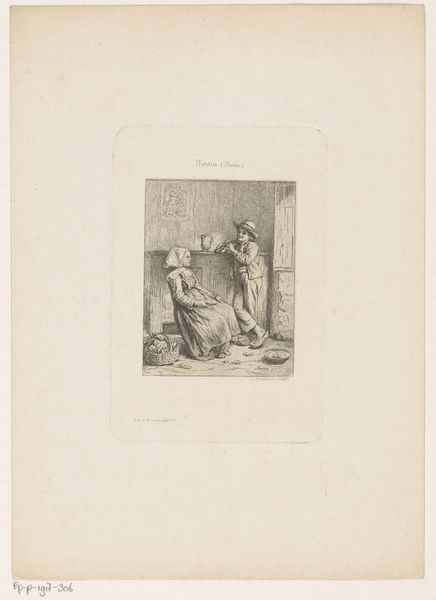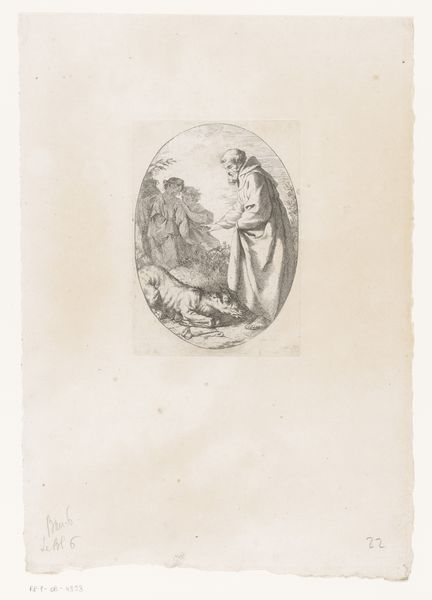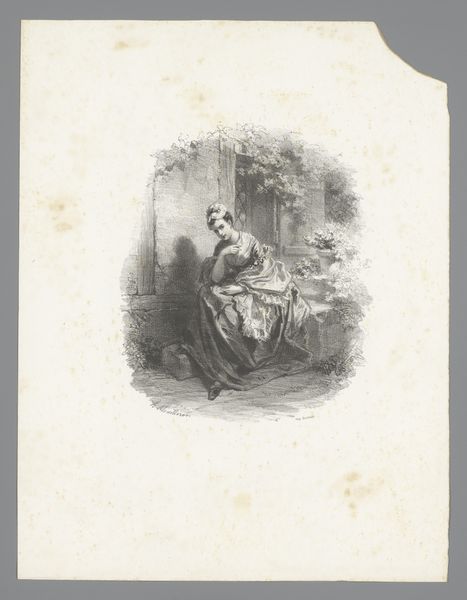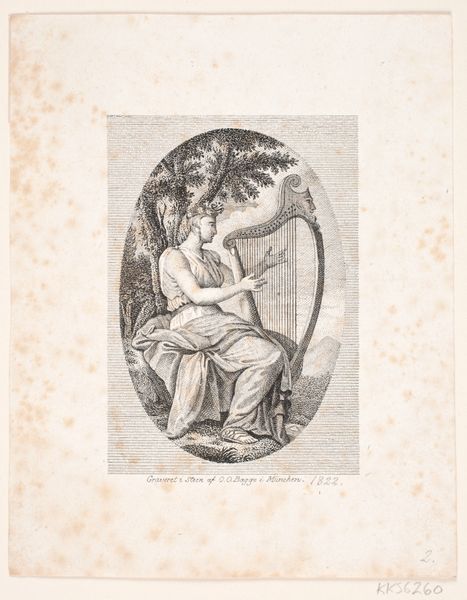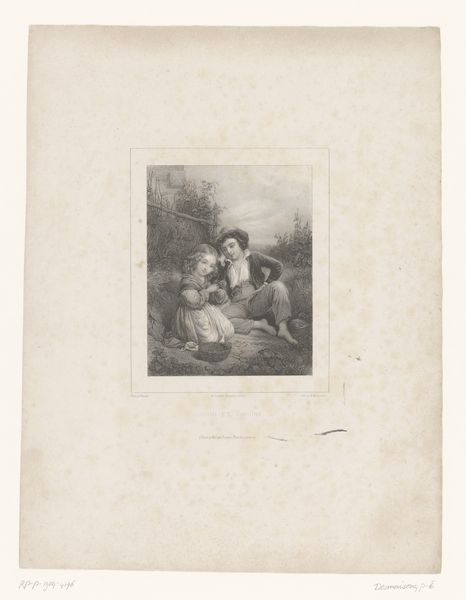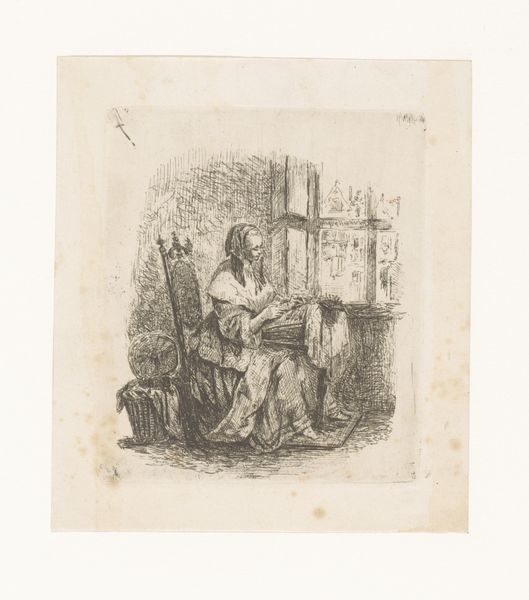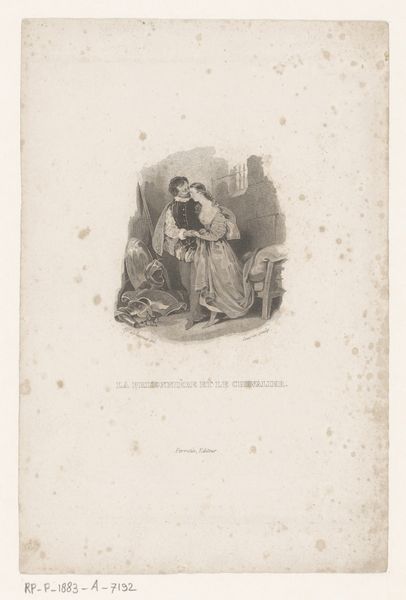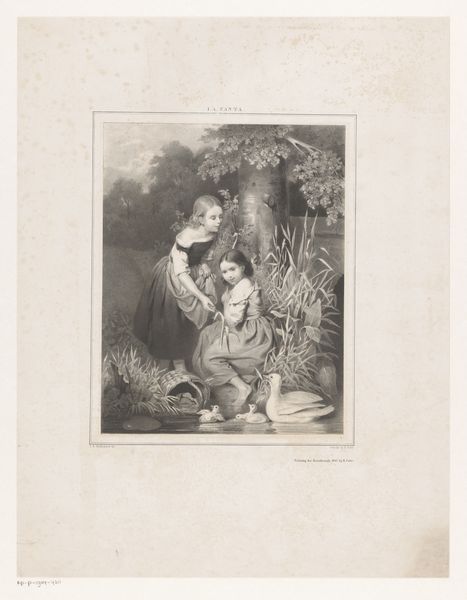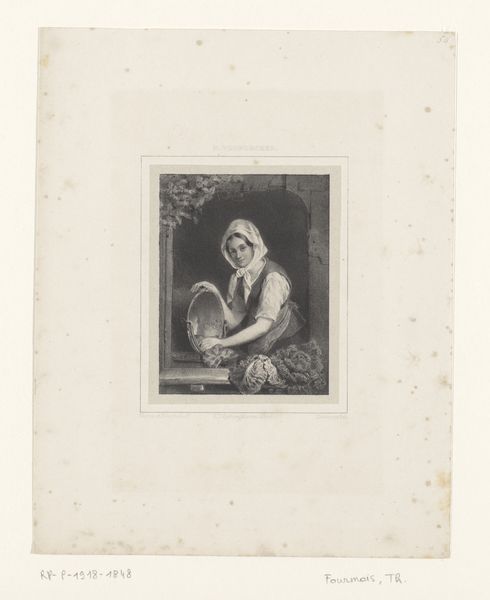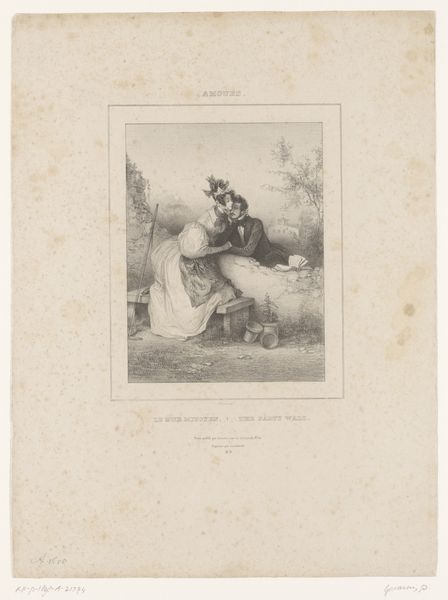
print, engraving
#
portrait
# print
#
figuration
#
romanticism
#
line
#
genre-painting
#
engraving
Dimensions: height 447 mm, width 305 mm
Copyright: Rijks Museum: Open Domain
Curator: Let's talk about this intriguing print, "Twee Bretonse geliefden", or "Two Breton Lovers," created around 1845 by Émilien Desmaisons. It’s an engraving, currently residing here at the Rijksmuseum. Editor: My first impression is the delicate atmosphere; it's almost dreamlike. There’s a softness in the lines that creates an intimacy between these figures. It certainly evokes a sense of romanticism, a longing for something perhaps. Curator: Absolutely. The choice of engraving, a meticulous printmaking process, lends itself to such fine detail. Think of the labor involved in etching those lines! It speaks to a society valuing handcrafted, reproducible images for wider consumption. Consider how the printing press democratized images that had before been accessible to only elite classes. Editor: Yes, but who are these people being depicted? The title says “lovers”, but that’s only part of the story. The clothes are significant. The woman wears a cap signaling some affiliation. Perhaps this print romanticizes the rural population and presents an accessible model of virtue that counters the social upheavals of the industrializing 19th century. Curator: An important point! By situating them in the rural area of Brittany, Desmaisons is connecting this loving encounter with local culture, folklore and history. And, that makes this a perfect example of Romanticism; a deep yearning for an idyllic rural past. Note the way their gestures reinforce traditional gender roles, the woman seated reading with a look of quiet acceptance, while the man seems to address her, leading with expression. Editor: I’d push back against seeing her expression as passive acceptance. To me she is participating actively and is engaged in listening to him, with perhaps a bit of subversion—she’s in the midst of learning to read or write, challenging limitations placed upon women in the era. Curator: That opens an avenue of analysis to consider these tensions: she holds a book, as education and information begin to shift modes of power. These new opportunities in this context begin to push up against the old conventions of labor in a new modern market economy. Editor: It adds to the overall nuance; that the simplicity depicted is both authentic and staged for societal needs and functions. And I think, overall, the success of this piece lies in that tension between desire, work, love and what is permissible in the market. Curator: Indeed. This print showcases not just artistic skill, but also reveals how images played a vital role in constructing and disseminating social values, all through this engraving process. Editor: It certainly reminds us that images aren’t just mirrors; they’re active agents in shaping identity, reflecting societal desires, class tensions and the constraints and challenges of identity during the era.
Comments
No comments
Be the first to comment and join the conversation on the ultimate creative platform.
